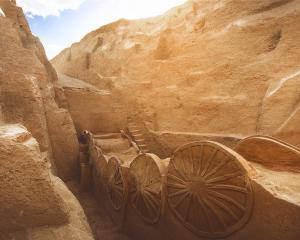
It ended when the state of Qin under the first Emperor defeated all his rivals to found a united China.
One of his most powerful adversaries was the state of Chu, located along the middle course of the mighty Yangtze River.

The five-year programme that completed its work in 2024 was a revelation.
The complex was comprised of a mound covering 134m×114m, rising to a height of 16m.
The archaeologists uncovered nine chambers at a depth of 20m that were reached by a broad ramp, each containing the king’s needs in the afterlife.
The entire floor of the tomb was covered by 700sq m of bamboo mats.
In earlier times, kings were accompanied by sacrificial victims, but King Kaolie went into his afterlife with wooden figurines instead.

In another, there were his musicians with their instruments — 23 bells, 20 stone chimes, 50 zithers, drums and flutes.
The Chu elite followed a long tradition of laying on lavish feasts that projected their exalted status and indebted their guests to reciprocate.
King Kaolie’s set of 154 bronze containers for food and drink were laid out in one of the nine rooms, some still containing vestiges of what they offered guests 2200 years ago.
The king was a firm believer in consulting his ancestors through divination that involved heating turtle shells until they cracked. His archive of shells had been carefully packed and stored.
The archaeologists have now recovered more than 10,000 artefacts, including exquisite lacquered wooden furniture. We can now admire, for the first time, a Chu king’s tables, boxes and trays, ornamented with paintings of dragons, cranes and phoenixes. Then there are his jade jewellery and animals modelled in gold and silver. Prior to the development of paper, the Chu kept their records inked onto slips of bamboo and these too accompanied the King. This is not the only tomb in the Chu royal cemetery. There is much awaiting discovery.












